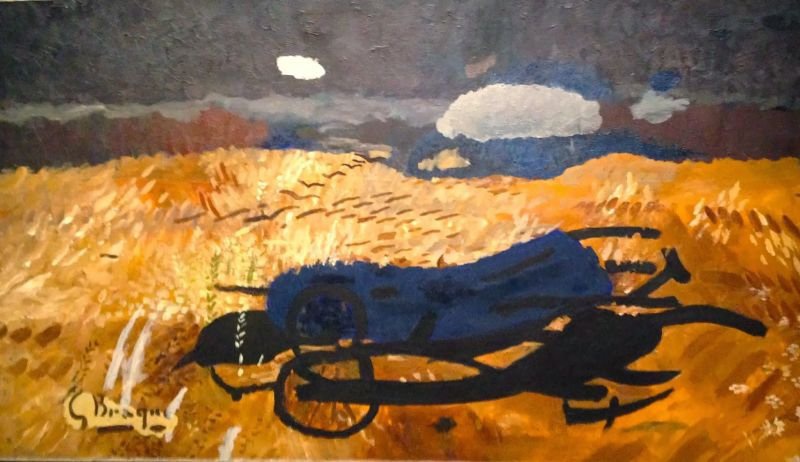It doesn't matter what point of entry we choose, as long as it allows us to draw the thread of the creation before our eyes. The ideal is, of course, to encounter a work that offers us everything: we make its aesthetics our own, it turns us upside down and instantly activates our right brain (which would be the seat of creativity, imagination and emotions), we discover its meaning, its scope, the artist's desire to bear witness to his or her time, and immediately we love it even more because it opens our eyes to something that will count for us from now on, we find it intelligent, luminous, and fundamentally useful to our perception of things and our knowledge of others.
It manages to say what we think, what we believe in, what we like, in just a few seconds, the time of a glance. In short, it makes us happy. We feel as if we have met a friend.
 My friend's work: at the end of his life, Georges Braque, who together with Picasso was at the origin of one of the most innovative currents in art, cubism, painted this last landscape (La sarminuse, 1963). In the background, a small white cloud. It was his last act as a painter. As if, in the end, true innovation lay less in technical or conceptual performance than in meaning, and that his artistic gesture should be devoted to painting the essential. This little cloud has entered the history of art.
My friend's work: at the end of his life, Georges Braque, who together with Picasso was at the origin of one of the most innovative currents in art, cubism, painted this last landscape (La sarminuse, 1963). In the background, a small white cloud. It was his last act as a painter. As if, in the end, true innovation lay less in technical or conceptual performance than in meaning, and that his artistic gesture should be devoted to painting the essential. This little cloud has entered the history of art.
It doesn't happen often, but when it does, it is a transformative experience, there is a before and after. This is a very personal experience for each of us, but often the major works of art history have the power to cross geographies and eras to connect us to each other, despite what separates us. We may have nothing in common, but we have these friendly works in common. And that's no small thing.
With today's artists, it's even better: we can meet them, they are sometimes accessible, next door, in a gallery, or online, on a media, through a podcast. We buy one of their works, they live from it. They have a story to tell us that resonates with our generation and our time, and they certainly have a unique way of seeing a subject from another angle, of challenging us where we had not seen anything, where we thought there was nothing to see, where we had never been.

A work I've never been to before: "Passport" by Lucy Orta and Jorge Orta - By owning one of the Antarctica World Passports, a symbolic work by Lucy + Jorge Orta, you commit yourself with simple everyday gestures to a common, ecological and social future. To be seen until 23 July 2022 at the MAIF Social Club in the exhibition "Prendre la tangente" (Credit: Lucy + Jorge Orta / ADAGP, Paris, 2021).
With our next exhibition "Politically Intimate" from 4 to 15 April in Paris and then online, we hope to make you experience this, an encounter. And more specifically, an encounter of meaning.
We are working so that this encounter can take place with the artists, during your exchanges during the openings, or through the videos and interviews that we will share on this site. And of course with the works on offer so that, once you have passed the gallery doors, they become friendly works whose meaning and significance you will enjoy sharing with your friends and family.
For 86% of collectors under 35, the primary motivation for buying art is "making an investment that has a social impact" (vs. 32% for those over 35), on a par with the emotional value of the work. (Art Basel & UBS Report 2021)
It is the characteristic of The Caring gallery to be situated at the frontier between art and society. In order to take concrete action, The Caring Gallery systematically associates an association or a partner NGO with its exhibitions: 10% of each sale of a work is donated to them. We allow everyone to make their purchase a gesture that also counts for the common good.
So yes, perhaps by buying art, we can also defend what we believe in.
See you soon, around beautiful works, but not only...
Florence Manuguerra
Founder The Caring Gallery
florence@caringgallery.com
